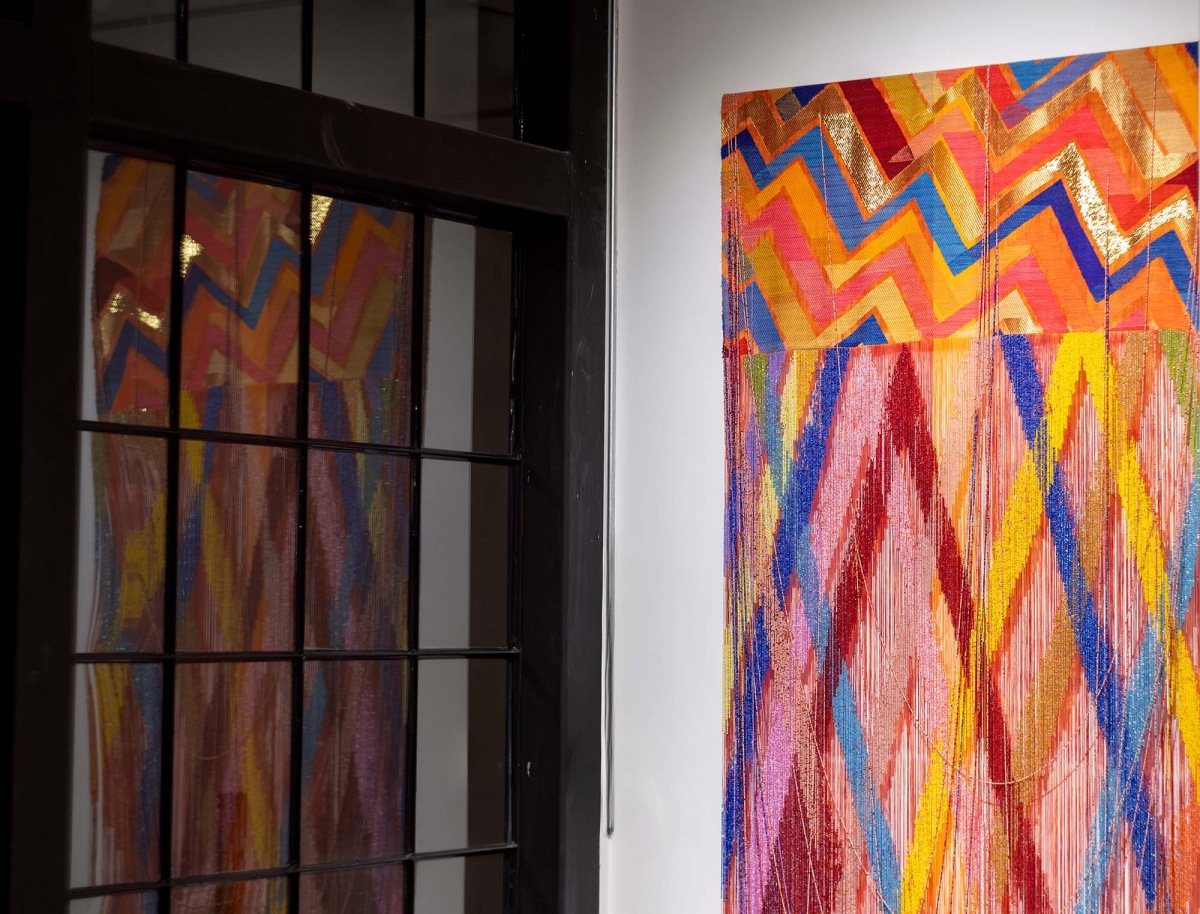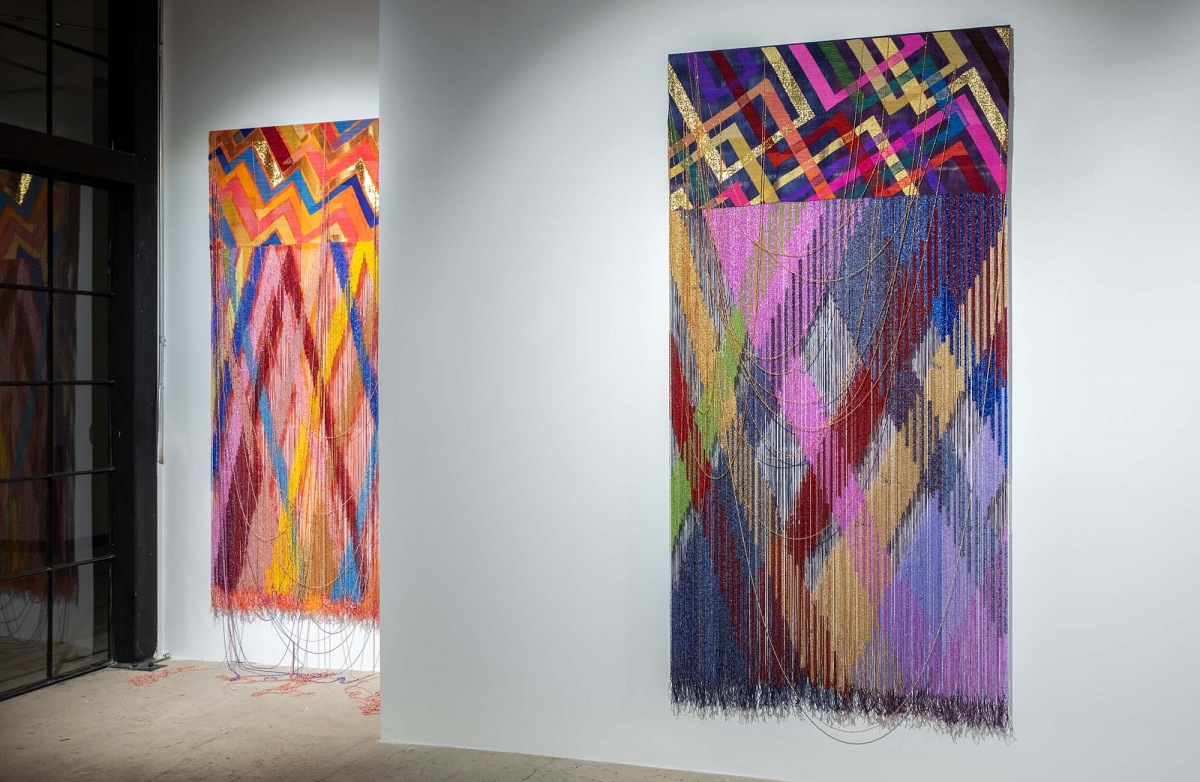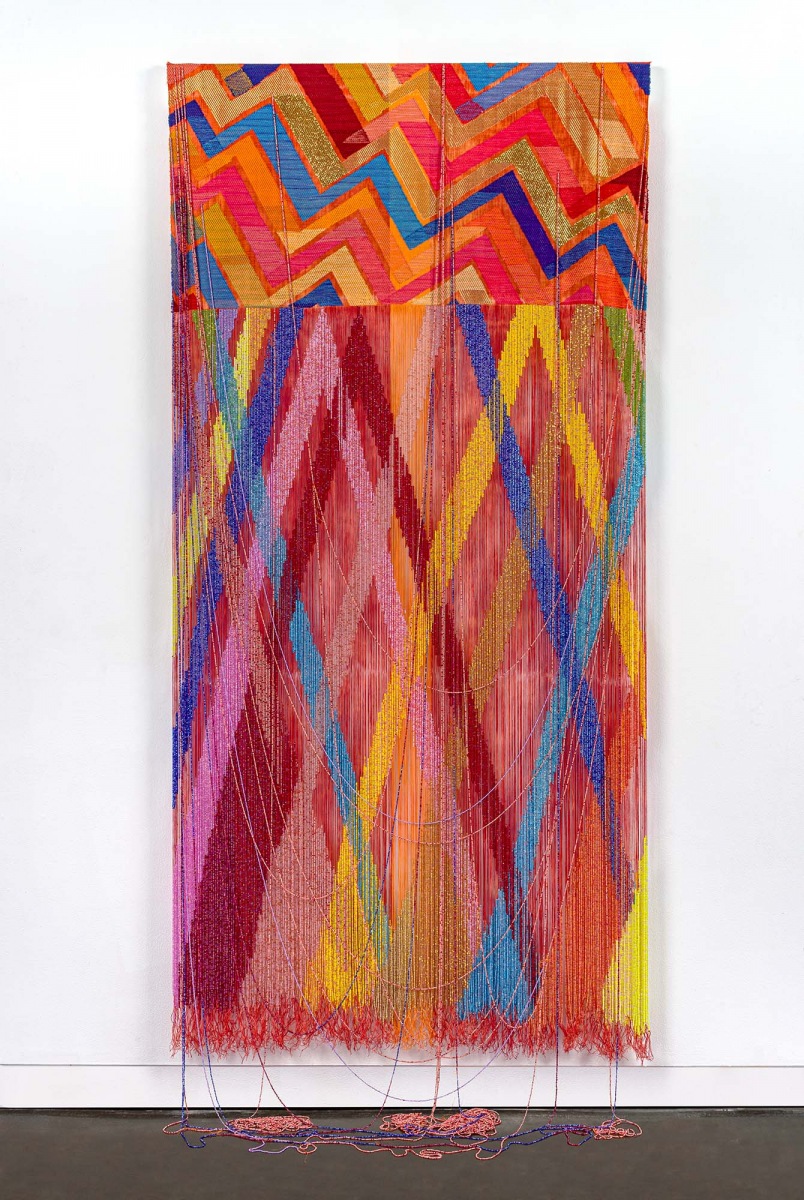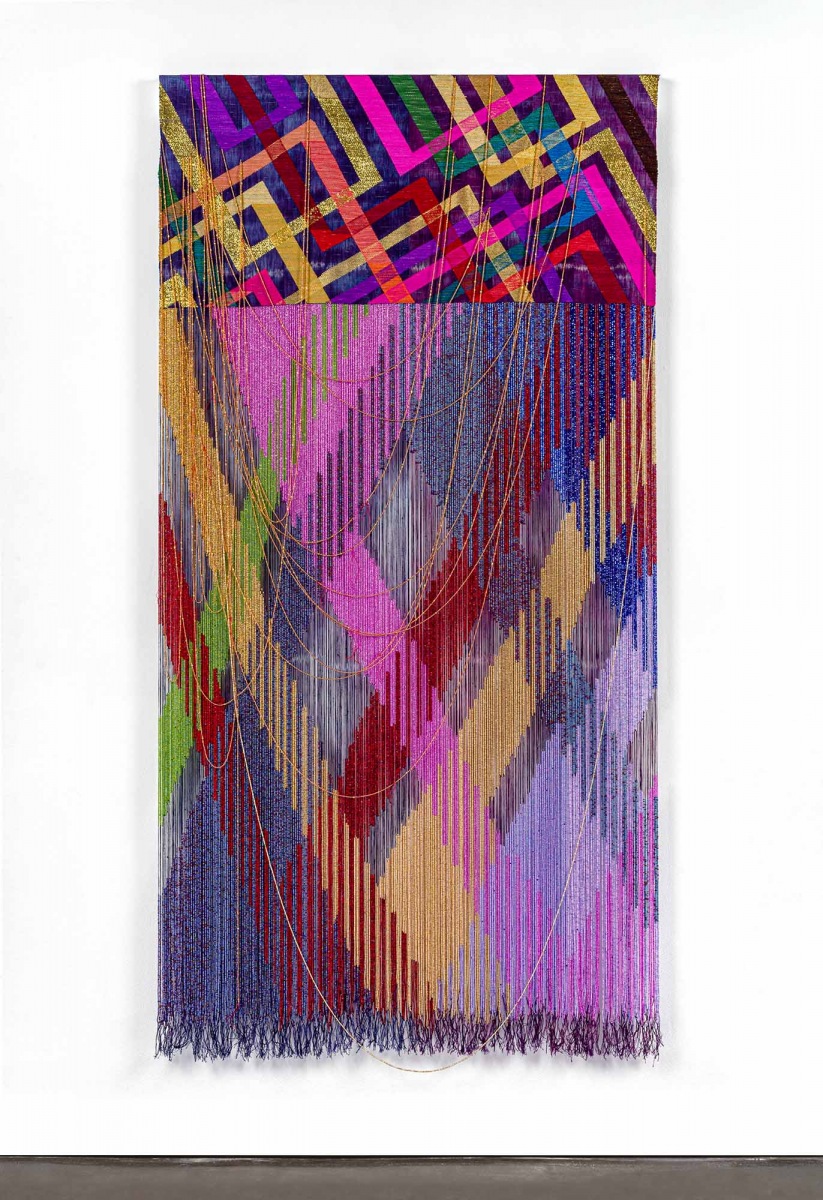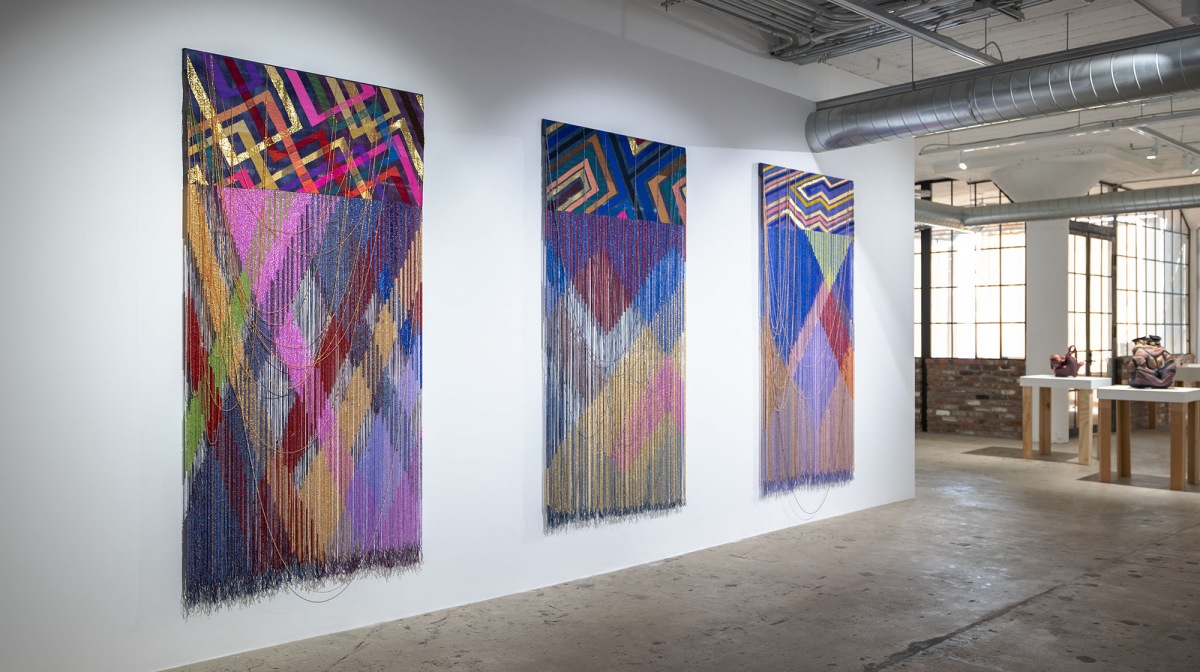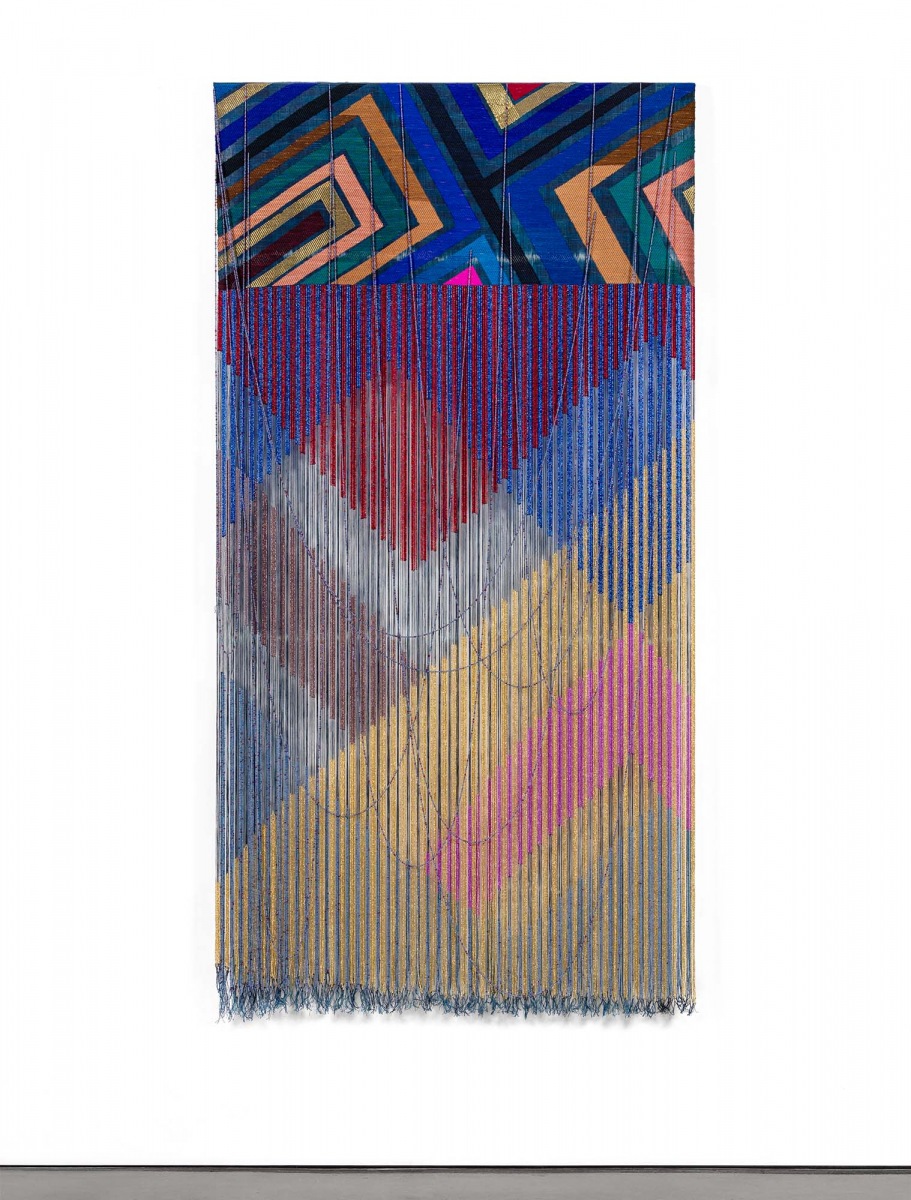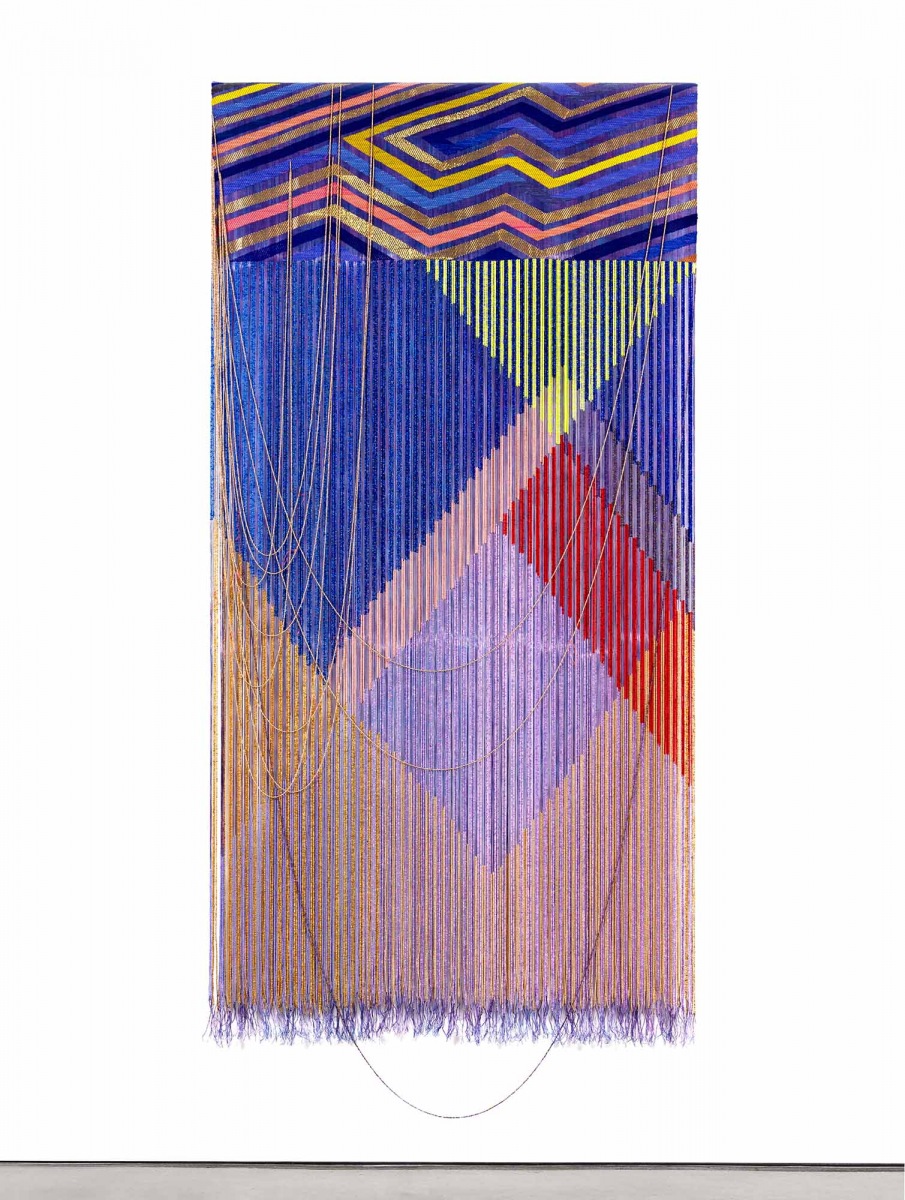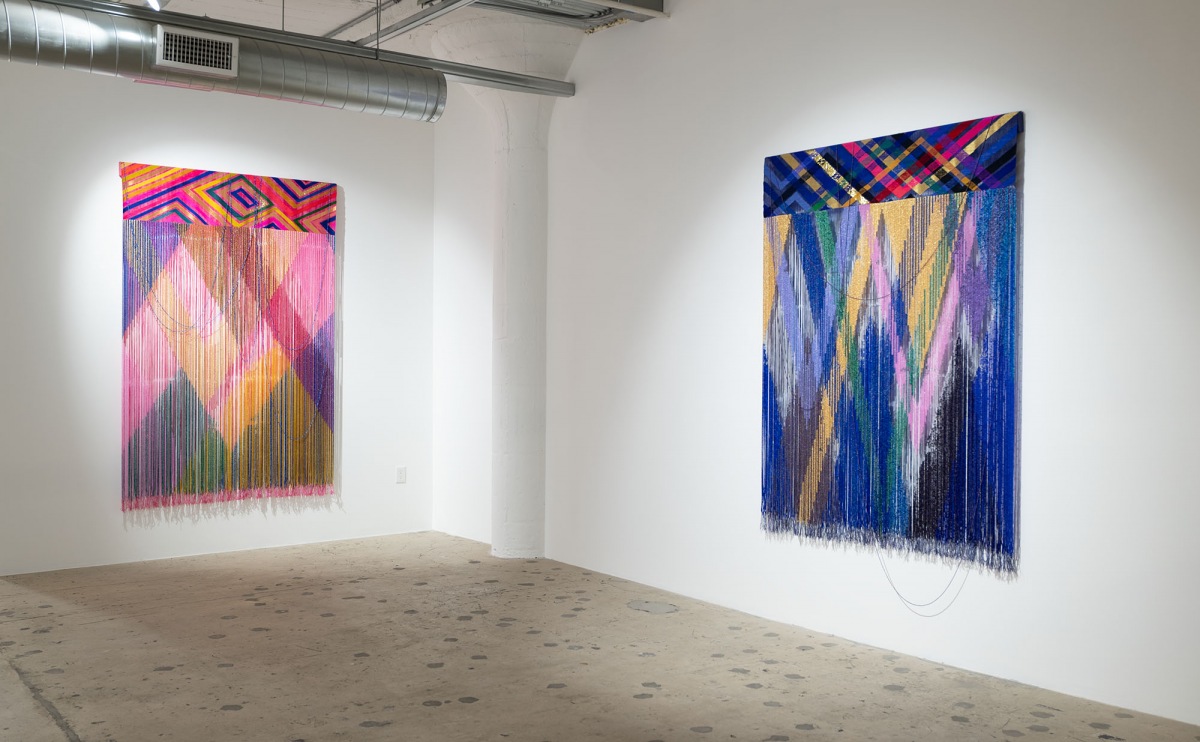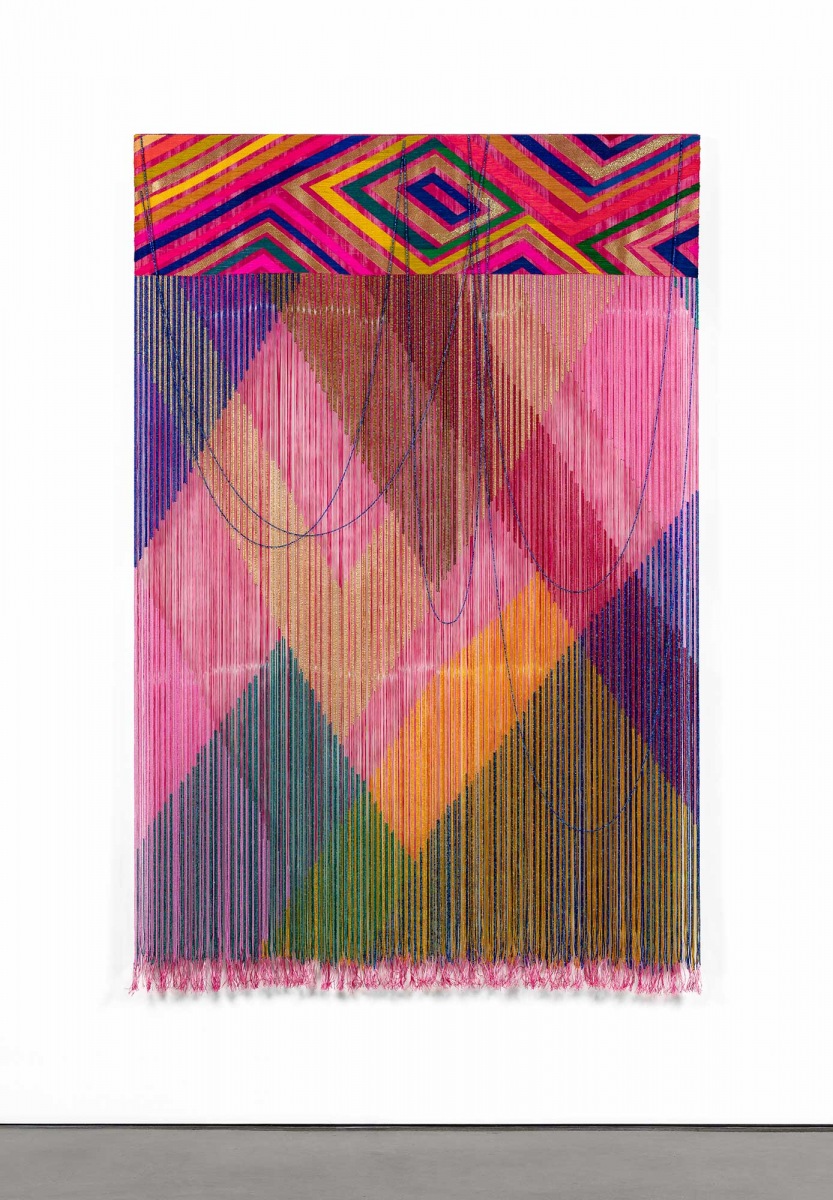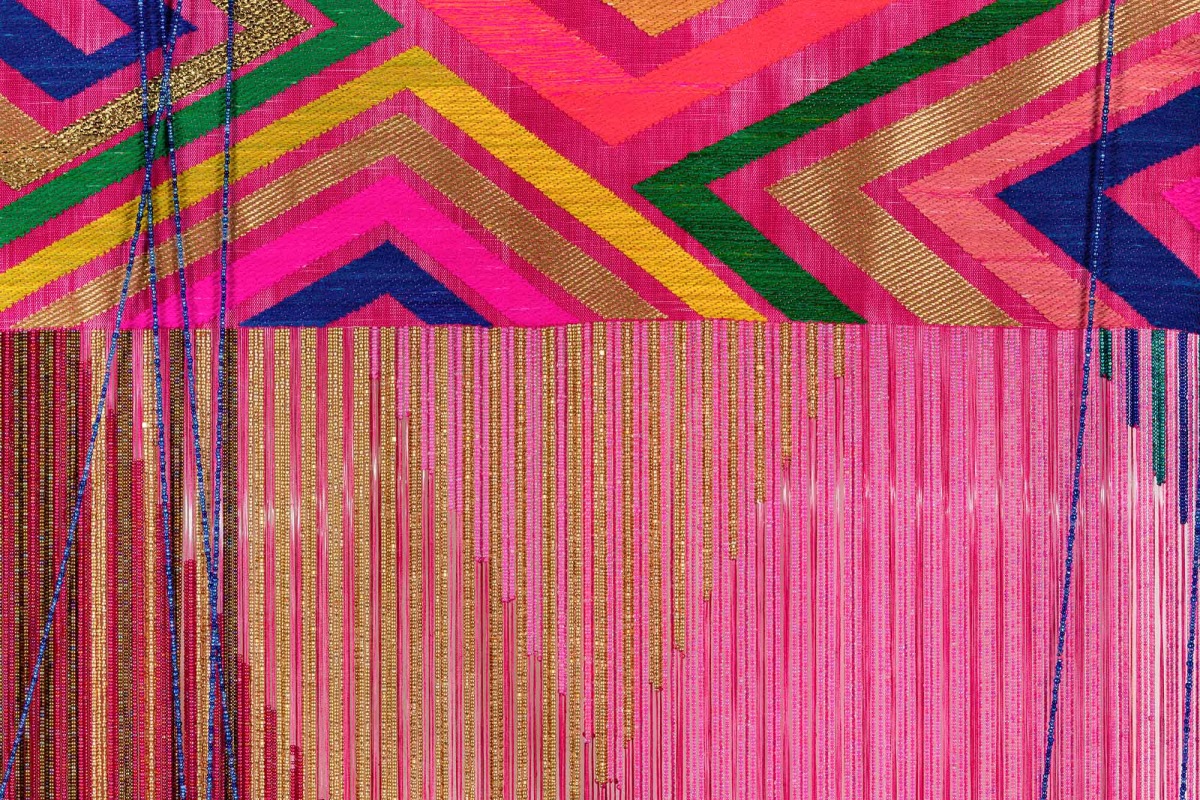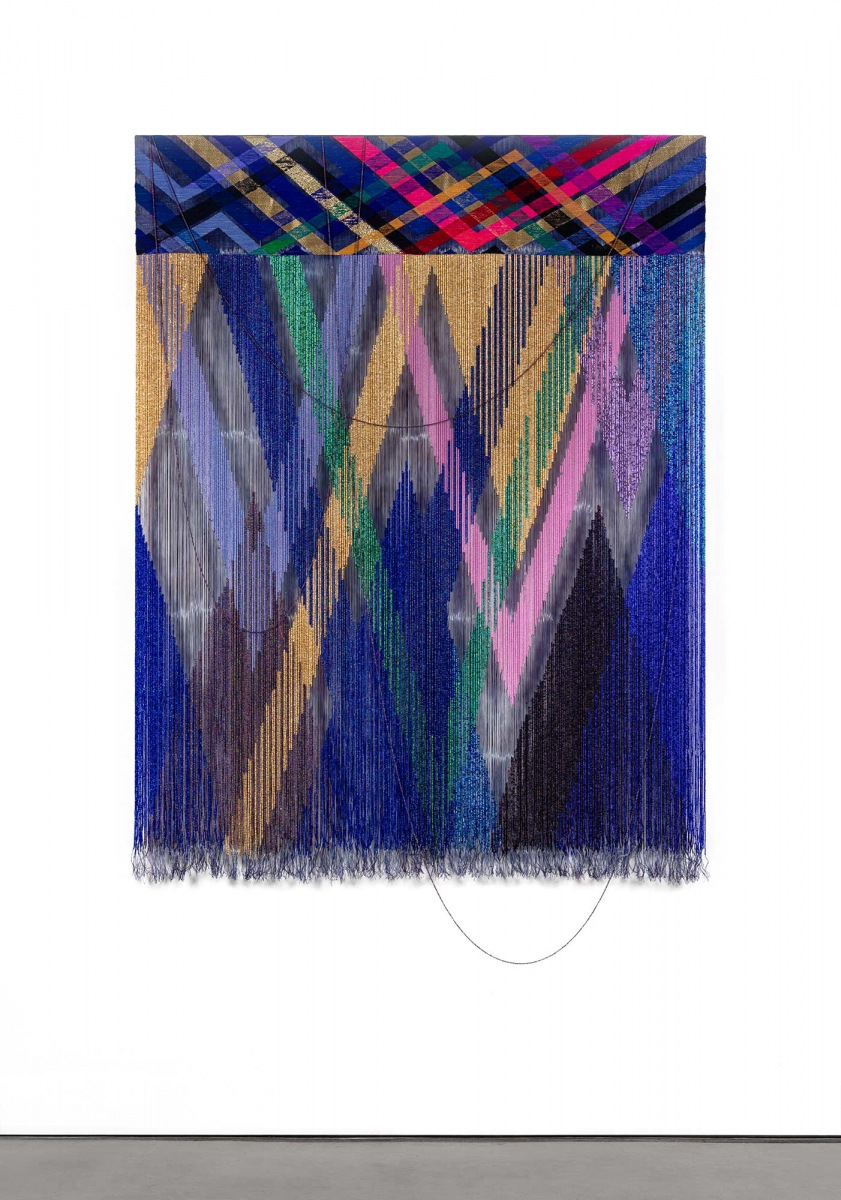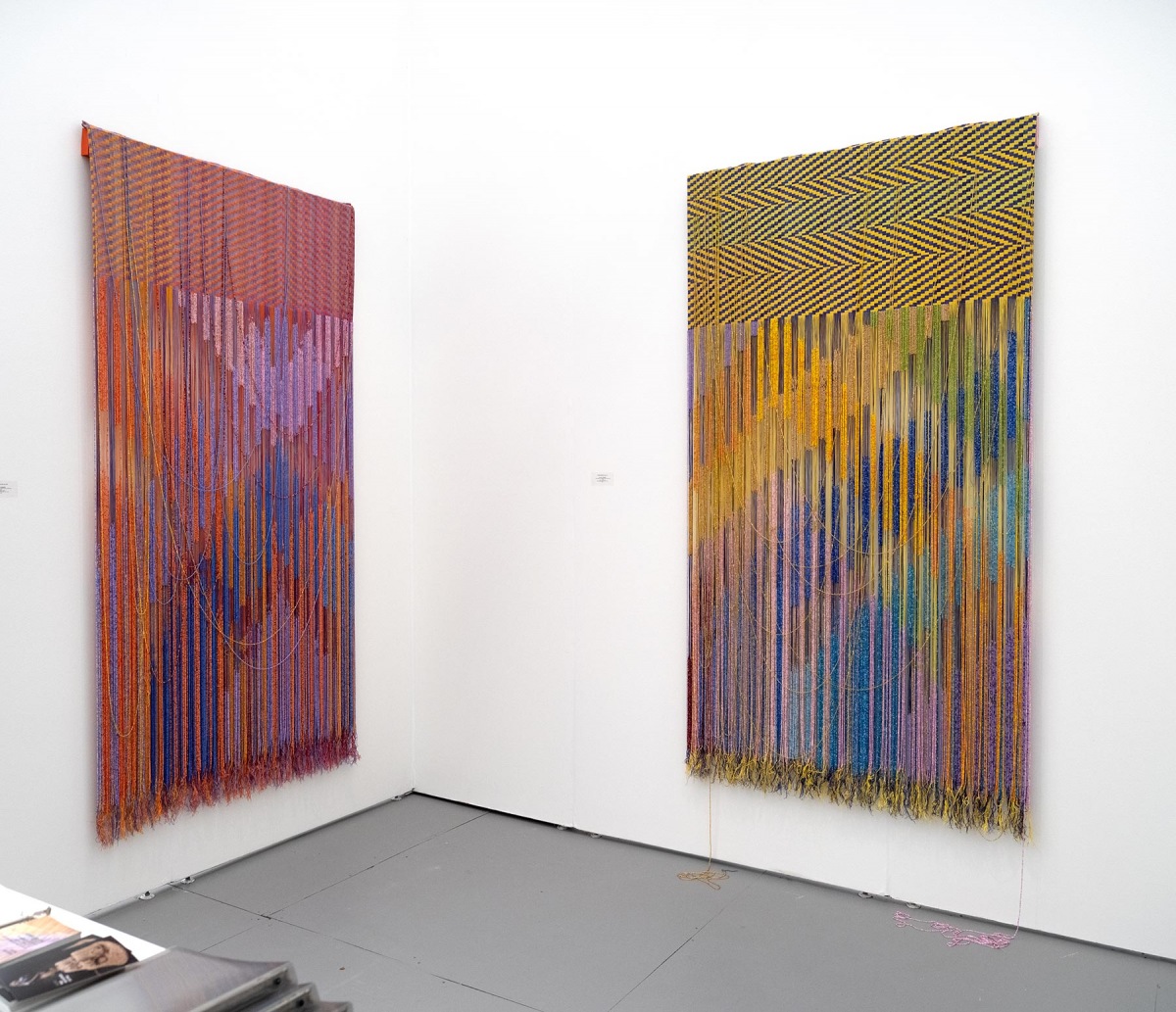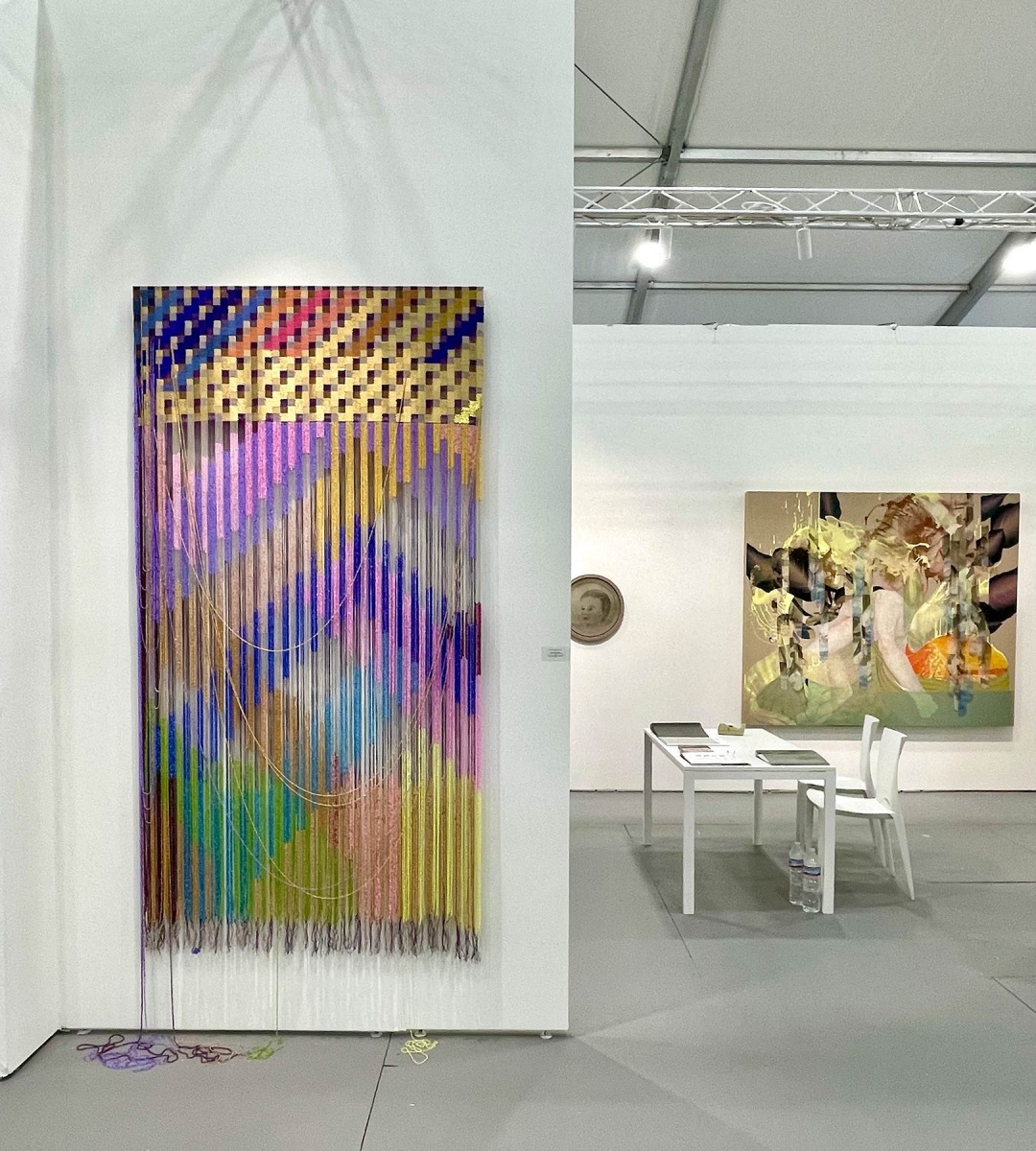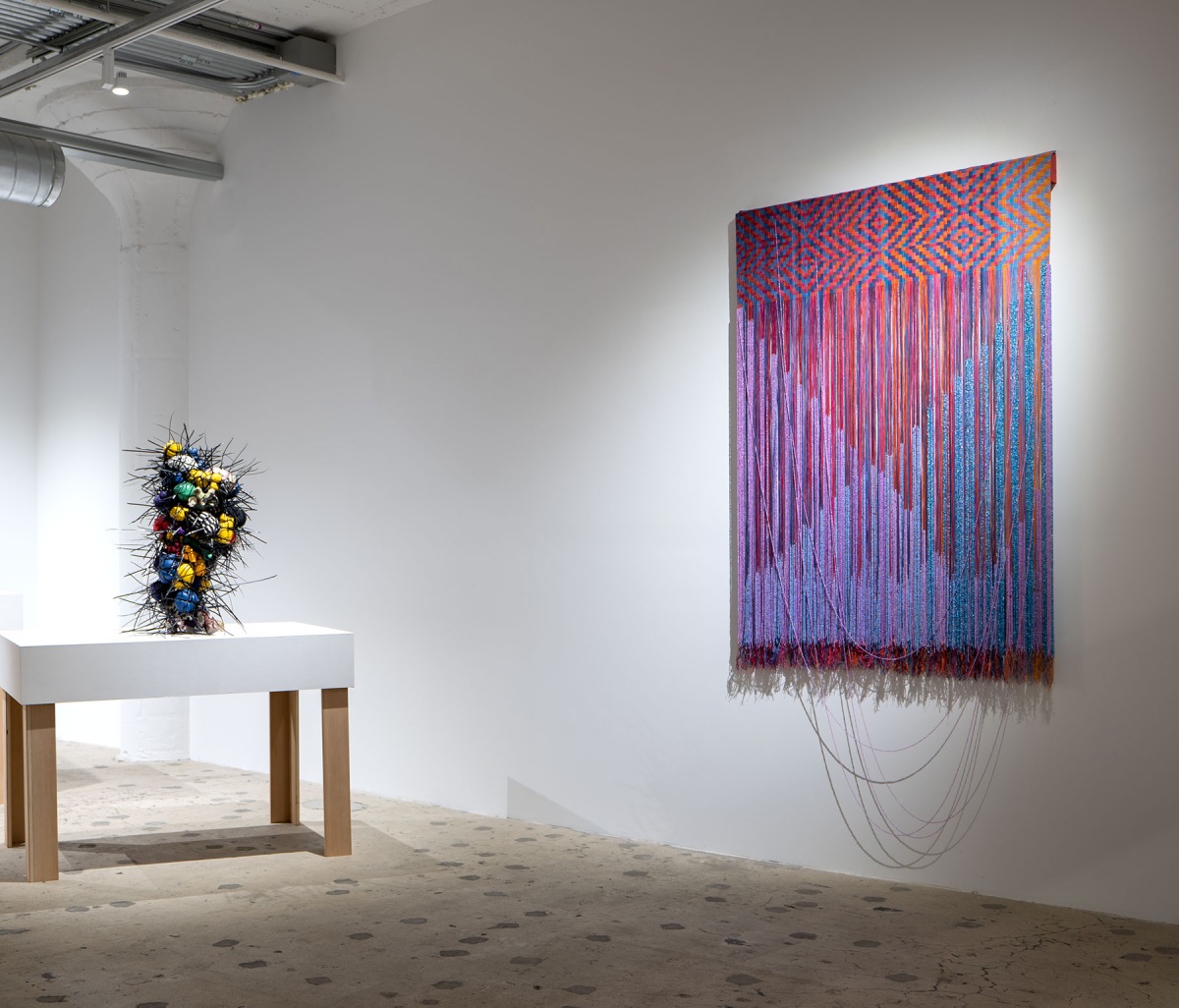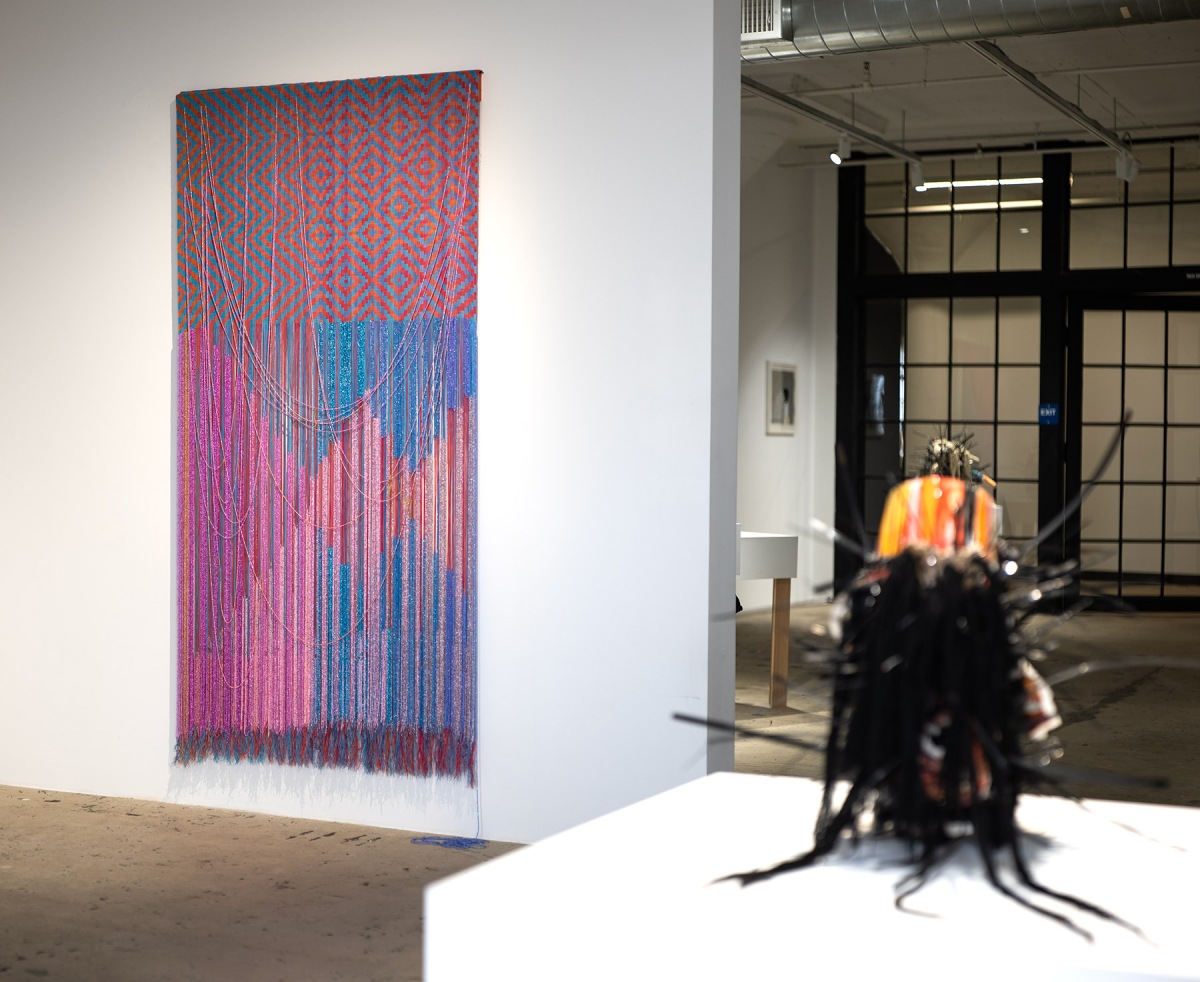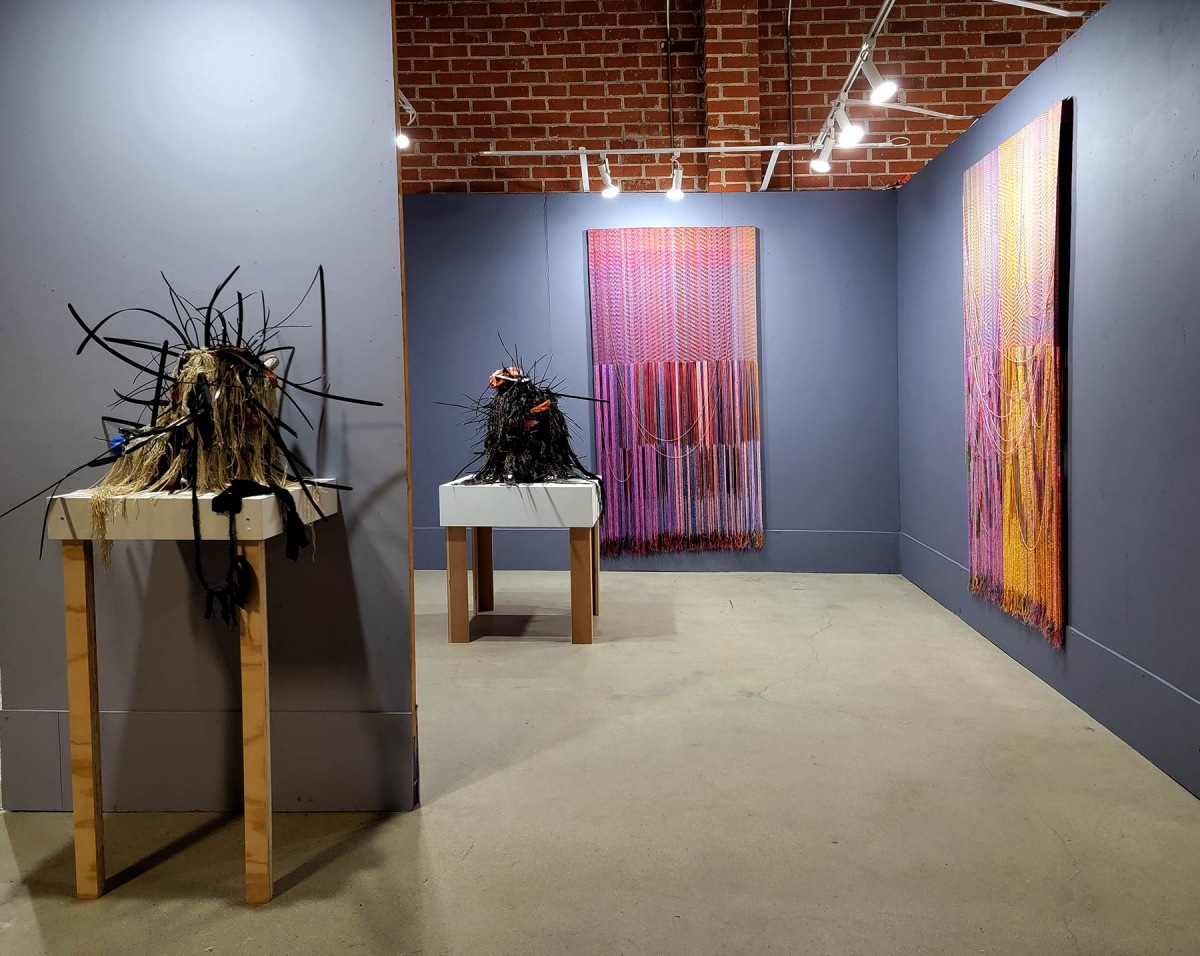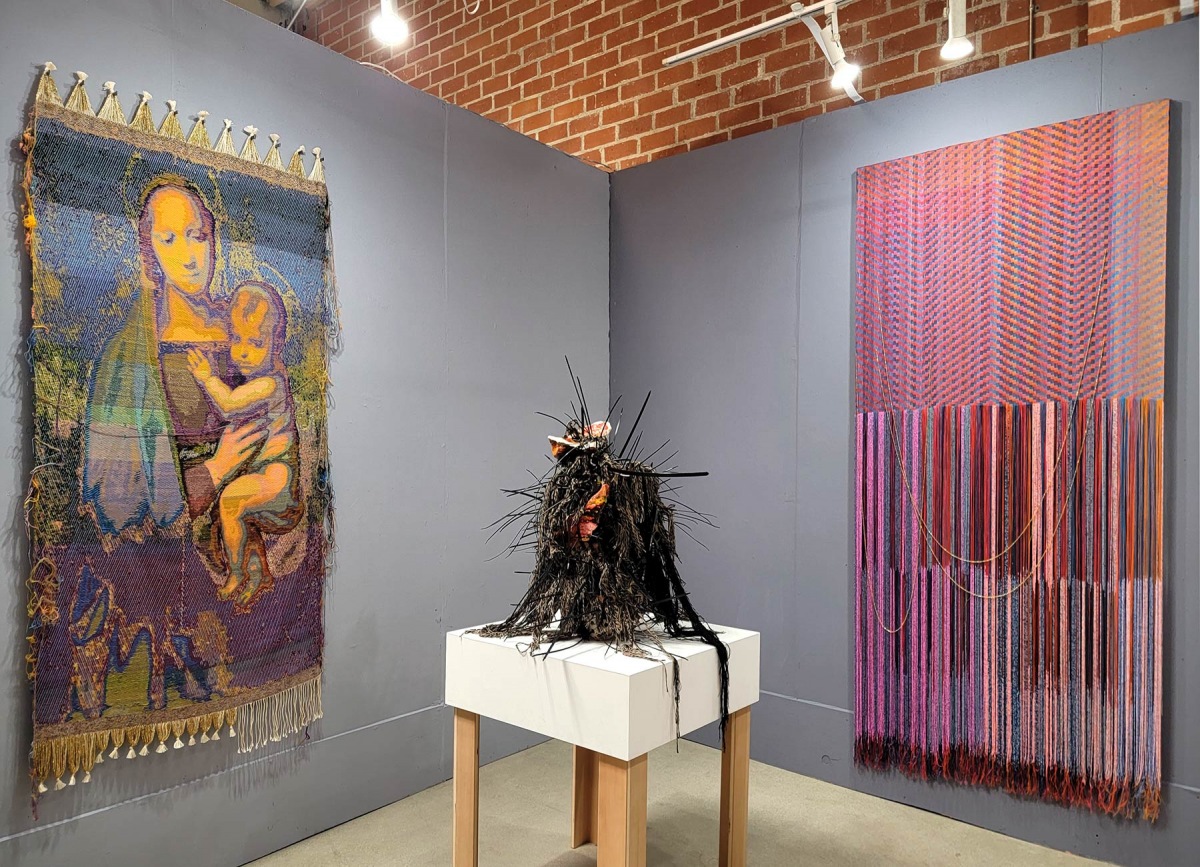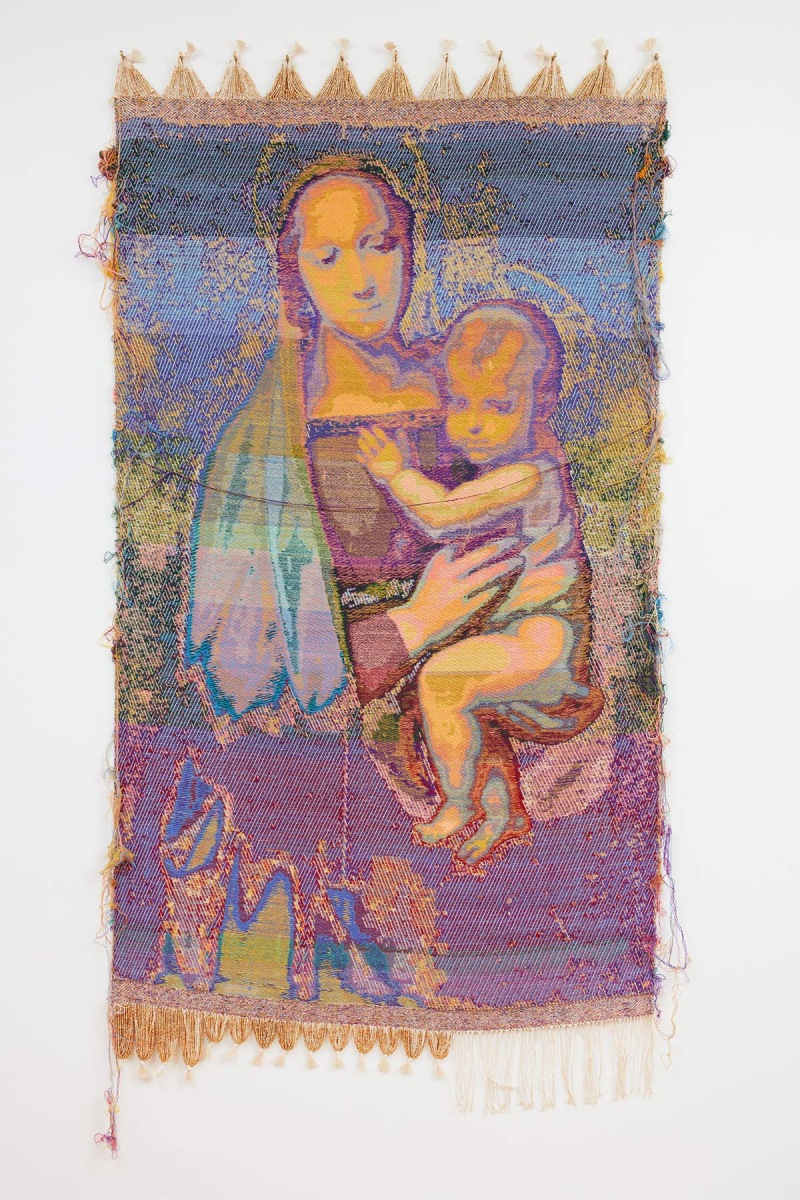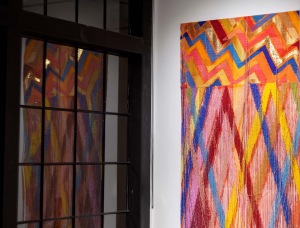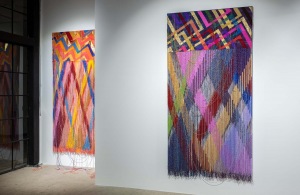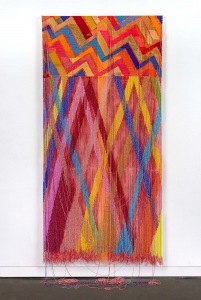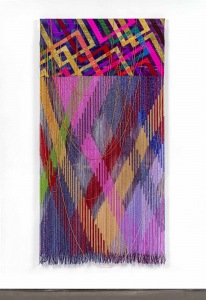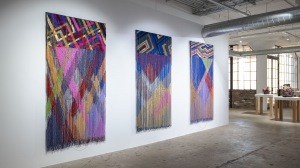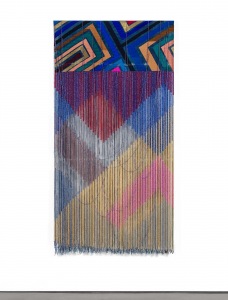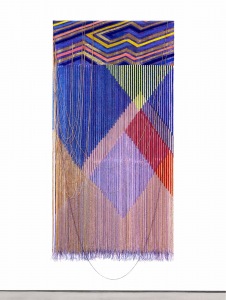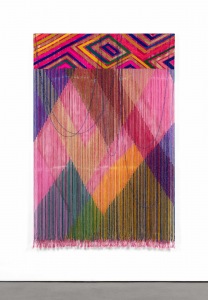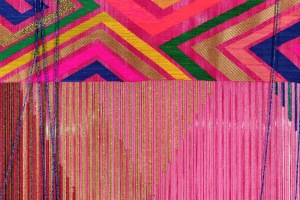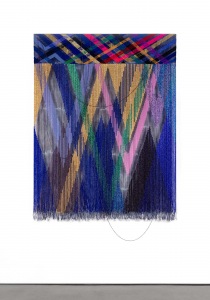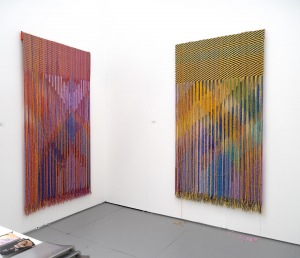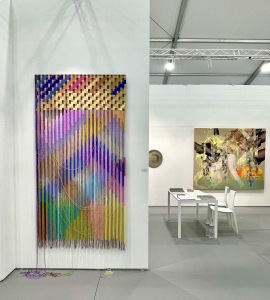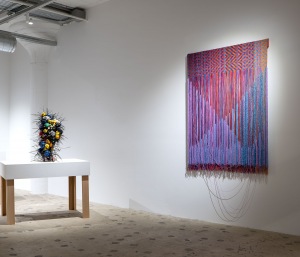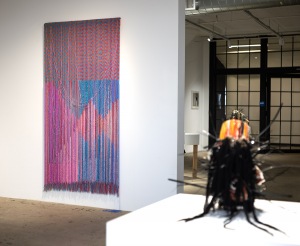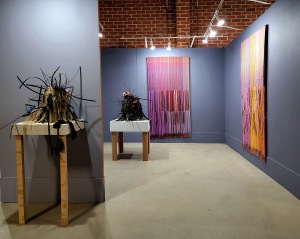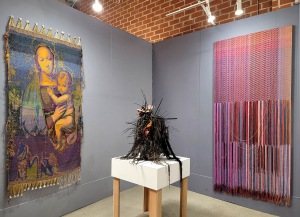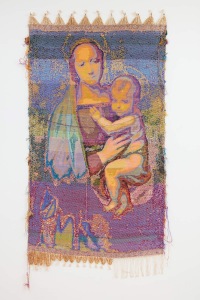Work
Videos
BIO
Transdisciplinary weaver John Paul Morabito engages queerness, ethnicity, and the sacred through the medium of tapestry reimagined in the digital age. Their work outputs woven forms, moving images, and relational actions that look toward a future-past horizon where one can exalt queer grace.
“I am defiantly a weaver. Through this position, I reconsider tapestry as a modality in which image, matter, technology, and embodiment provide productive conflicts for constructing form. Drag, in all its bombastic and glittering glory, is a guiding sensibility which I engage as a queer methodology to decadently retrace (and undo) faith, history, and legacy. Here, I employ digital interfaces in concert with improvisational handwork to mutate relics, devotional images, and ritual matter into opulent woven memorials that twist time. This temporal folding is further explored by drawing live weaving into videos and performances that engage time-based media through the linear logic of weaving. The resulting objects, videos, and performances are unbound from chrononormativity to rest, uncomfortably, within queer temporality. Released from the tyranny of the present, my work looks toward a future-past horizon where one can exalt queer grace”.
– John Paul Morabito
Tapestries were one of the more effective propaganda tools of early church and state. John Paul Morabito’s tapestries enlist this same methodology to contort the tropes of faith, bequeathing Queer assignation to sacred church Renaissance paintings in the series Magnificat. Morabito grew up in the Catholic Church, a second-generation Italian American who is gay. John Paul employs Goth overtones to deftly reframe the stigmatization and hypocrisy of the Catholic Church toward Queer communities and culture. By changing the intention and material of early devotional paintings, they deliberately stage a Queer melodrama with a subtle but explicit intervention, cloaking the paintings of Madonna and Child in Drag – a Queer allegory turning sacred to Camp. Draped in saturated color, beaded and swathed in gold, their tapestries are a tribute to Queer life and community.
The series For Félix (love letter), is an homage to Félix González-Torres, who succumbed to AIDS in the ’90s. Morabito’s series is a corollary to the exquisite homoerotic beaded curtains of González-Torres, a powerful metaphoric veil between sex, life and death. Morabito’s beaded tapestries offer a ravishing tribute to González-Torres, but also deliver a celebratory fist to subsequent Queer generations. Like González-Torres’, Morabito’s art is a protest against religious and institutional policies as the guiding moral orthodoxy. Their subtle but powerful interventions in For Félix (love letter) reinterpret sanctity with a seductive queer protest. Beading the long strands of thread is analogous to the beaded Rosary, only instead of contrition, Morabito’s act is erotic, lacing their tapestry with desire, intimacy, exaltation, and remembrance.
January 2024. They are Assistant Professor and Head of Textiles at Kent State University in Ohio. From 2013 to 2022 they were on the faculty at the School of the Art Institute of Chicago in the Department of Fiber and Material Studies. They hold a BFA from the Maryland Institute College of Art and an MFA from the School of the Art Institute of Chicago.
In tandem with their studio, John Paul Morabito pursues a practice-led scholarship that positions weaving as a critical platform of cultural production. Their writing has been published in Art China, The Textile Reader 2 (China Academy of Art), The Journal of Textile Design Research and Practice, Textile: Cloth and Culture. They are the editor of Weaving Beyond the Binary, a special issue of the international peer reviewed journal, Textile: Cloth and Culture. Their work has been included in museum exhibitions, including the Art in Embassies Program, Washington, DC; and Southeastern Center for Contemporary Art (SECCA), Winston-Salem, NC, The Threads We Follow; Queer Abstraction, curated by Jared Ledesma; Hangzhou Triennial of Fiber Arts, Zhejing Art Museum, Hangzhou City, China.
